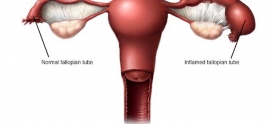uterine prolapse
Uterine prolapse is one of the most common problems among women. Some factors such as natural childbearing, menopause or other infections lead to this problem.
Uterine prolapse may be incomplete or complete. An incomplete prolapse occurs when the uterus is only partly sagging into the vagina. A complete prolapse describes a situation in which the uterus falls so far down that some tissue rests outside of the vagina.
Causes of uterine prolapse
Various factors such as:
- Genetics
Some women may have many natural childbirth with no prolapse, but may have 1 natural childbirth and uterine prolapse. In this situation, genetics is main factor.
- Aging
- Overweighting
- Frequent constipation
- Pelvic tumors
- Chronic chough
- Loss of muscle tone
- Delivery of a large baby
Uterine prolapse symptoms
- Pelvic and back pain
- Increased discharges
- Constipation
- Stool and urinary incontinence
- Abnormal bleeding during menstrual
- Feeling as if you’re sitting on a small ball or as if something is filling out of your vagina tissue.
The gynecologist, Dr. Bahmanpour, recommends to do Kegel exercises to prevent prolapsed bladder and uterine prolapse. Women should learn correct way of exercises and know when they should contract or expand their muscles. These exercises prevent recurrence of the uterine prolapse.
When to see a doctor?
Uterine prolapse doesn’t require treatment if it’s severe. If your signs and symptoms become bothersome and disrupt your normal activities, make an appointment with your doctor to discuss your options.
How to treat uterine prolapse?
Doing Kegel exercises is an effective way to treat uterine prolapse, and tighten pelvic muscles. As mentioned before, obese women have more risk of uterine prolapse, so, keeping a balanced weigh can help you.
Vaginal pessary is another treatment way of uterine prolapse. This device fits inside your vagina and holds your uterine in place.
To repair damaged or weakened pelvic floor muscles, your doctor may perform surgery through your vagina.
If you want to be pregnant in future, you might not be a good candidate for surgery to repair uterine prolapse. Pregnancy and delivery of a baby put strain on the supportive tissues of the uterus and can undo the benefits of surgical repair.
Contact Dr. Mitra Bahmanpour, Gynecologist
Address: Khalij Fars Building. Next to 18th st. Velenjak. Tehran. Iran
Tell: +9821- 26641827
+9821- 26641908
+9821- 1831
+98912- 0897425




